Last summer, I had the opportunity to travel to the magical heel of Italy’s boot. Another destination wedding. Cue sigh. This time, though, I decided to extend the trip and explore this region of Italy I had heard so much about. I landed in Bari after a connection through Milan and quickly hopped in a rental car to drive the 2+ hours to Otranto. Not for the weary.
Two espresso stops later I was in Otranto. The drive was uglier than imaginable. Petrol station after petrol station amid endless dry desert, I thought, why would anyone want to get married in this shit-hole? You see, in Puglia, the land is dusty, arid, and brown. It takes time to get to know it—to appreciate it. To forget your modern luxuries. This is not Capri, as the bride told me.
Veering off the highway and into the winding, empty town of Minervino di Lecce, things became more appealing. Suddenly, olive tree groves emerged and the land became a deeper, redder brown. Though deserted, the small, white town had old beautiful old statues and winding streets with hidden five star hotels tucked behind walls. Nonne puffed their cigarettes in plastic chairs in front of their apartment buildings, watching the American glitz pour into Puglia to finance their tourist economy.
Luckily for me, the wedding brought me to venues I never would have seen without a bride whose family has ties to the region.
The first night was drinks at the Castello di Depressa. A total treat—bougainvillea climbing the weathered stone.
The main event was at the Palazzo Ducale in Alessano. An even bigger treat. Gorgeously manicured gardens within an ancient courtyard full of citrus trees.
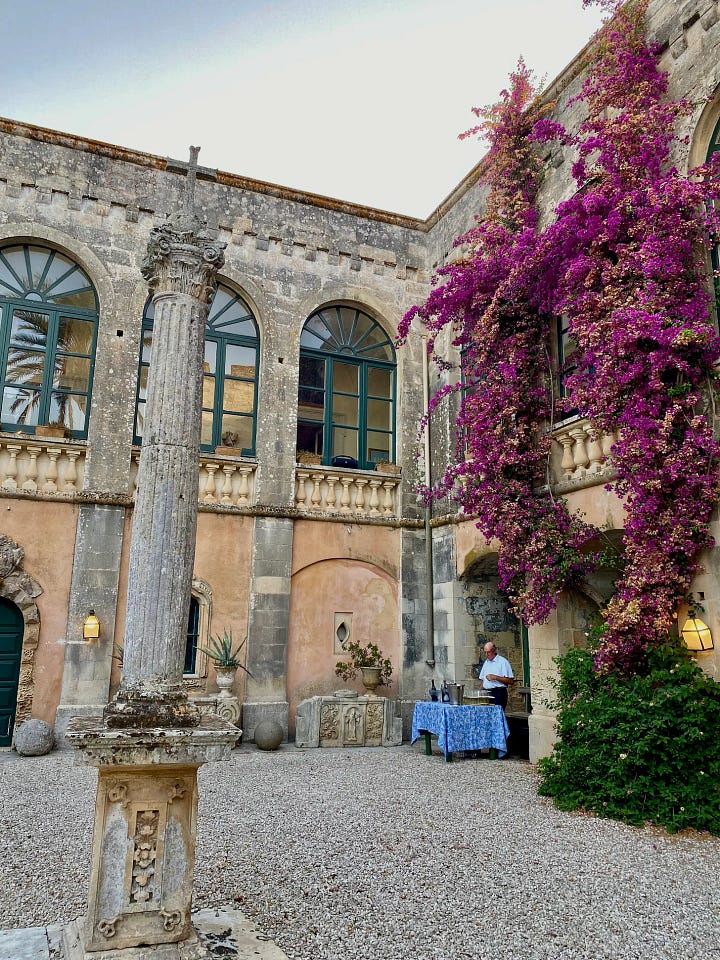
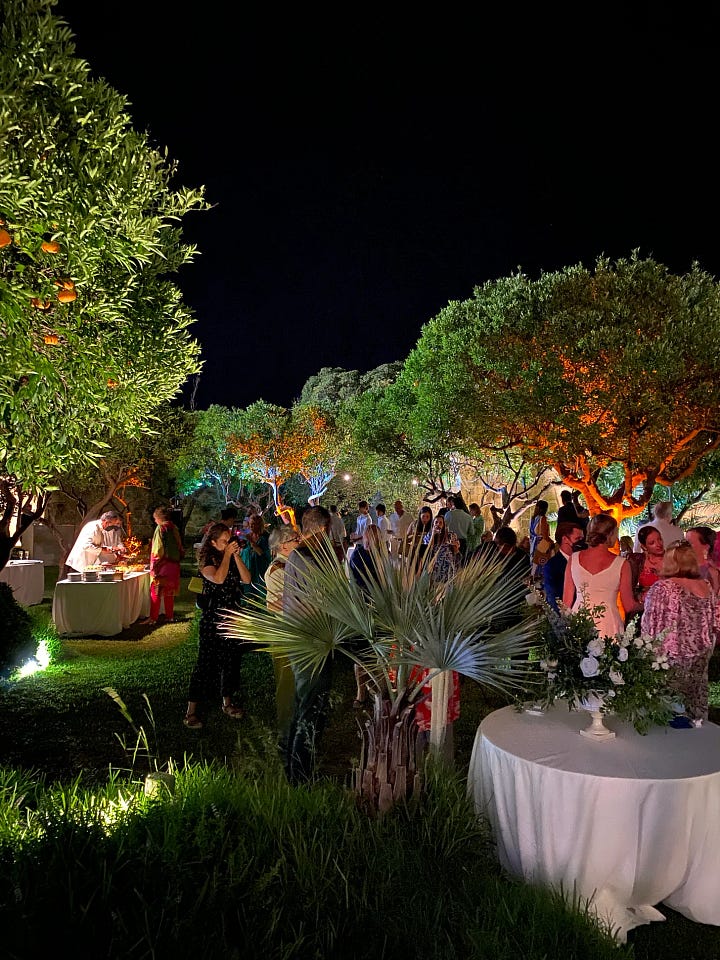
Throughout the weekend, I got to know the masserie, or farms, most of which grow olive trees, many of which double as hotels. But the real journey through the heel of the boot started when the festivities ended, and I headed to the coast. Here is the real treat of Puglia—gorgeous beach clubs and a natural swimming holes built into cliffs and rocky vistas where you laze the day away.
By Friday, when I had inched my way back up to Bari, I did not want to leave. I was entranced by the untouched wild—there was so much left to discover. But, alas, duty called. Another wedding. Sigh.
Below is my itinerary that I highly recommend. I started south in Salento and worked my way back up to Bari. 🇮🇹 Otranto 🛵 Tricase 🛵 Lecce 🛵 Ostuni 🛵 Alberobello 🛵 Monopoli 🛵 Polignano a Mare 🛵 Bari 🇮🇹
OTRANTO
Beyond the planned wedding events, I stayed at the Palazzo Ducale Venturi in Minervino di Lecce. A dreamy little Relais tucked behind an unassuming, oversized wooden door. Small garden, cute pool. What I learned about Puglia is the accommodations don’t really matter, it’s about the daytime exploration and authentic, affordable cuisine.
My first day, I finally got a glimpse of the gorgeous aqua channel where the Ionian becomes the Adriatic. I took a bumpy, dusty road under a highway to emerge at an adorable lunch spot with a high viewpoint of the sea called Terazzo Paradiso.
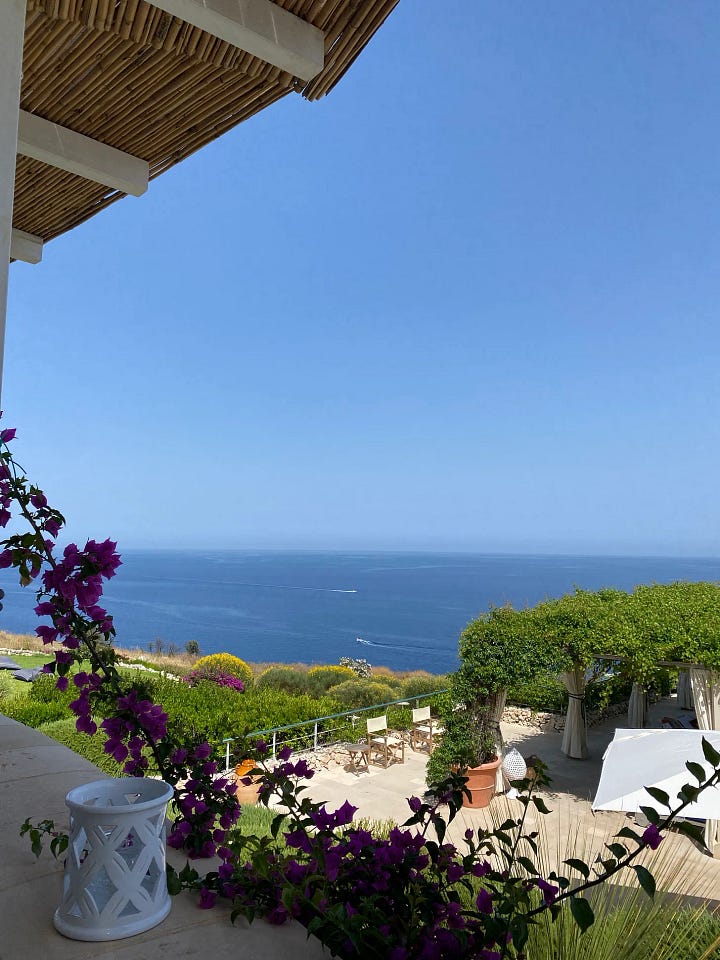
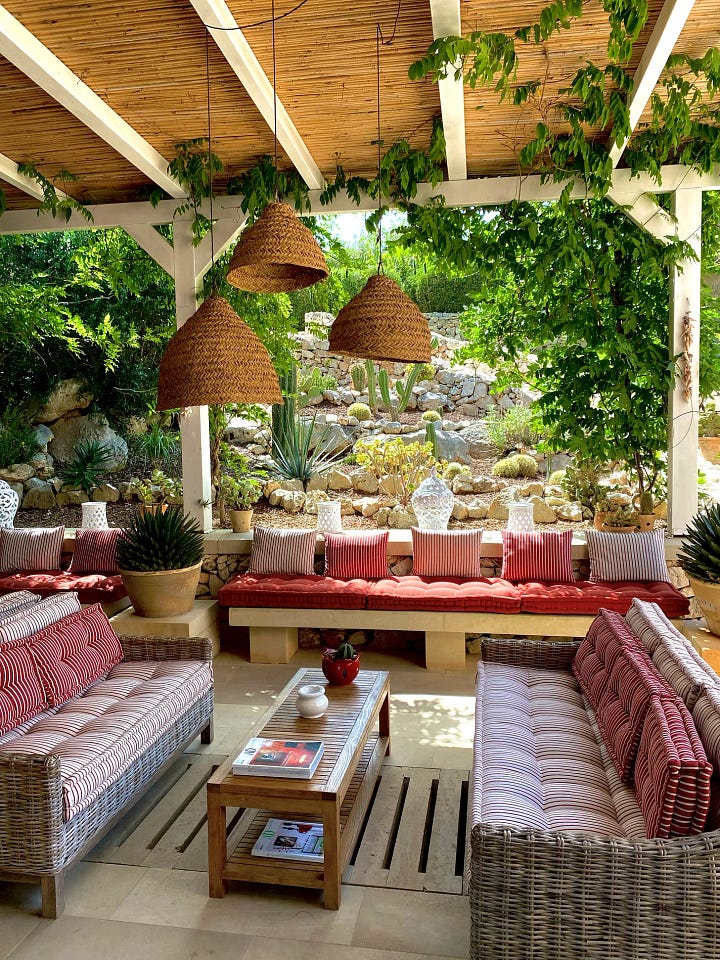
After lunch, I drove south to Tricase to explore some more older Puglian cities. The heel of Italy is in such a unique position, that many ethnic groups battled for ownership of the heel for years. You see architectural influences from different periods of control ranging from Italian, to Greek, to Turkish notes. Fascinating.
In Tricase I also got my first dose of the Puglian drug called ceramiche. I had to buy a new bag to pack all of my ceramics on the way home. The craftsmanship is divine and unrivaled. Puglia is most known for their pumo luck charm, a blossom symbol that represents fertility and prosperity. The best ceramics store in Tricase is Ceramiche Branca.
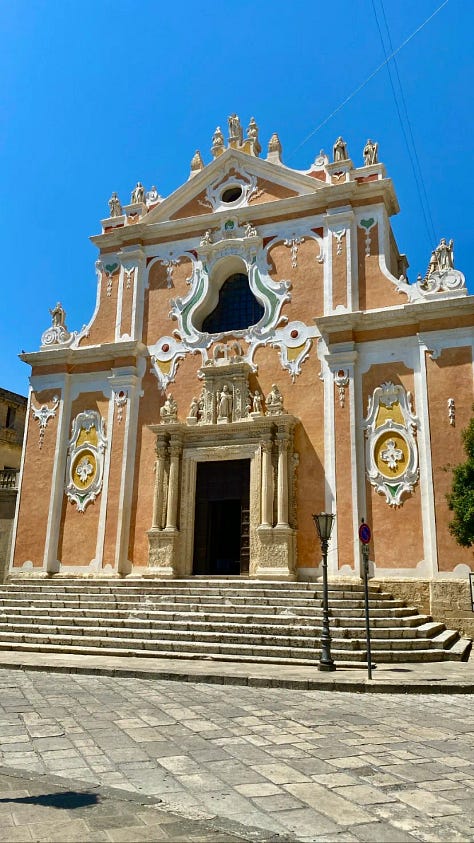
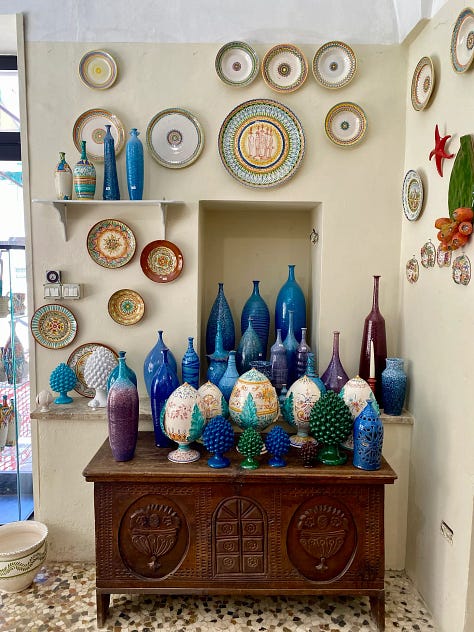
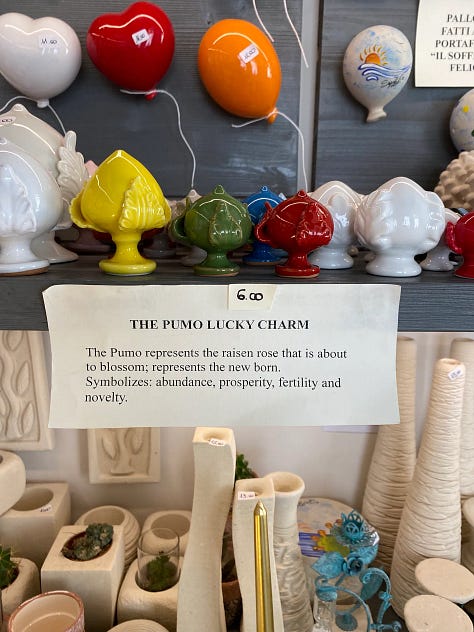
Hugging the coast and making my way northward, I stopped at a random charming beach club called Lido Roccia. The sign pulled me. I booked a lettino and sat by the water, diving into the chilly sea when it got too hot. Which it does, OFTEN, in Puglia. Hot, hot, hot.
But the real secret of Puglia has to do with the natural rocky landscape. Natural pools carved into the cliff and/or naturally formed are the public pools, no need to book a chair at a club, and an unforgettable sight. The locals come here to avoid people like me! Below is Le piscine naturali in Salento.

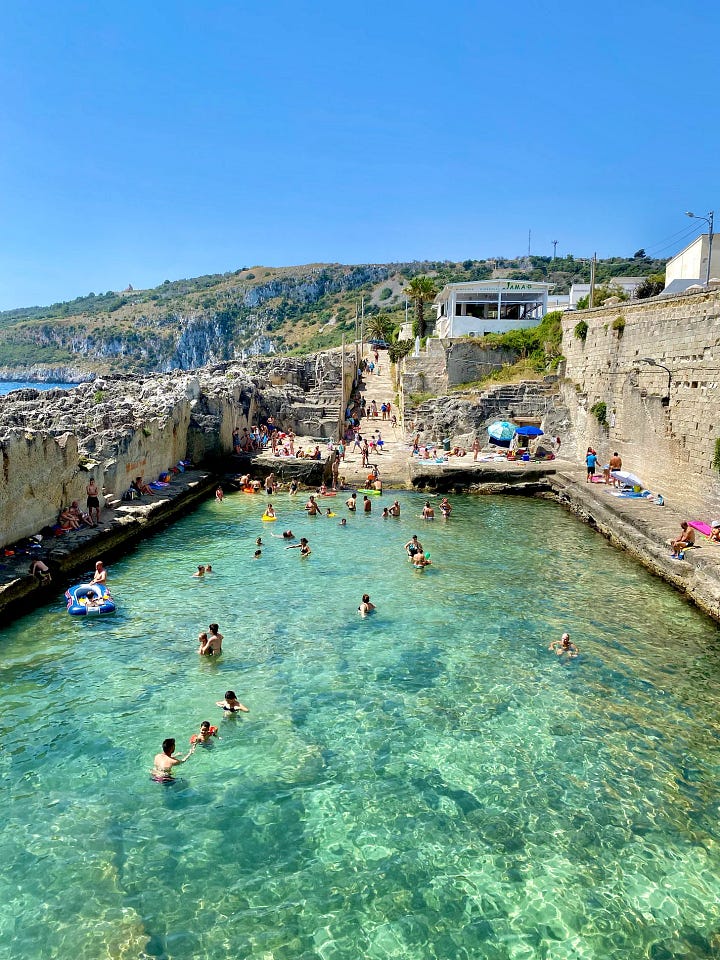
Before I knew it, it was time to make my way up to Lecce, so some things that I did not get to do but wanted to are:
Visit: Torre Sant'Andrea beach
Dine: Acmet Pasha, Da Marta, Cantine Menhir
LECCE
Before getting back in the rental car (which is necessary in Puglia, FYI), I went to the goodbye brunch at yet another magical beach club, or lido, called Lido La Castellano, a beautiful spot with lawn that fades into sand. A quick dip then off to Lecce.
On the way to Lecce, I made sure to stop at the locally famous La Poesia swimming hole and cliffs. Approaching the entrance, you see unbelievable rock walls, the Mediterranean slapping the rocks. After a small entrance fee and tiny walk, you start to see the adventurous young Italians dropping from the sky. Daring children jumping from a 30 foot cliff. I opted for the 15 foot version, then swam through a natural arch into the natural pool. Worth the fee! Then back in the car.
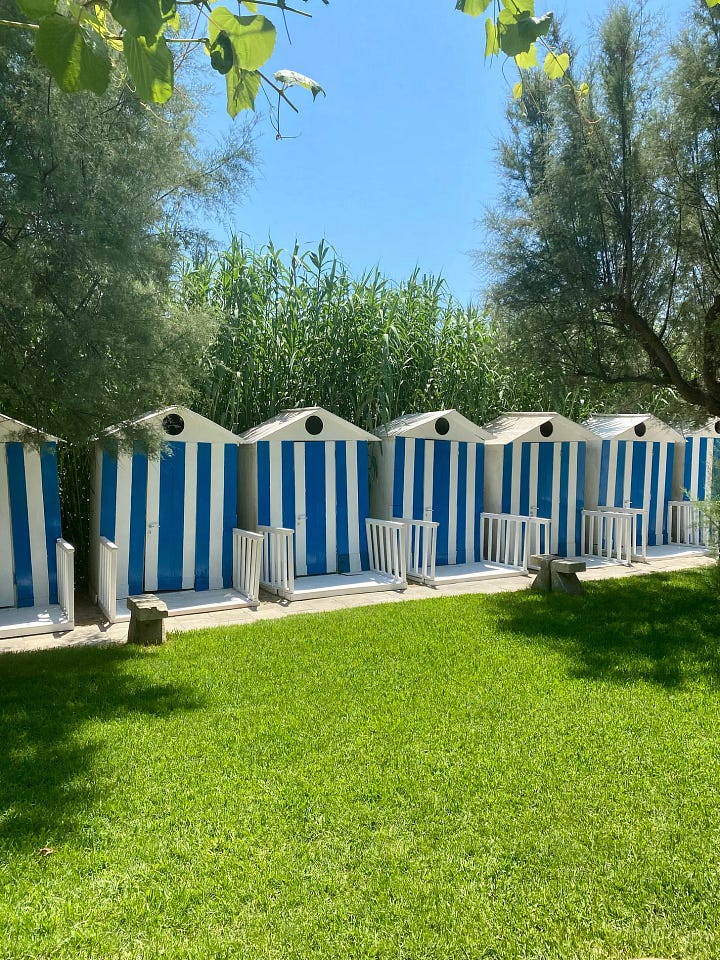
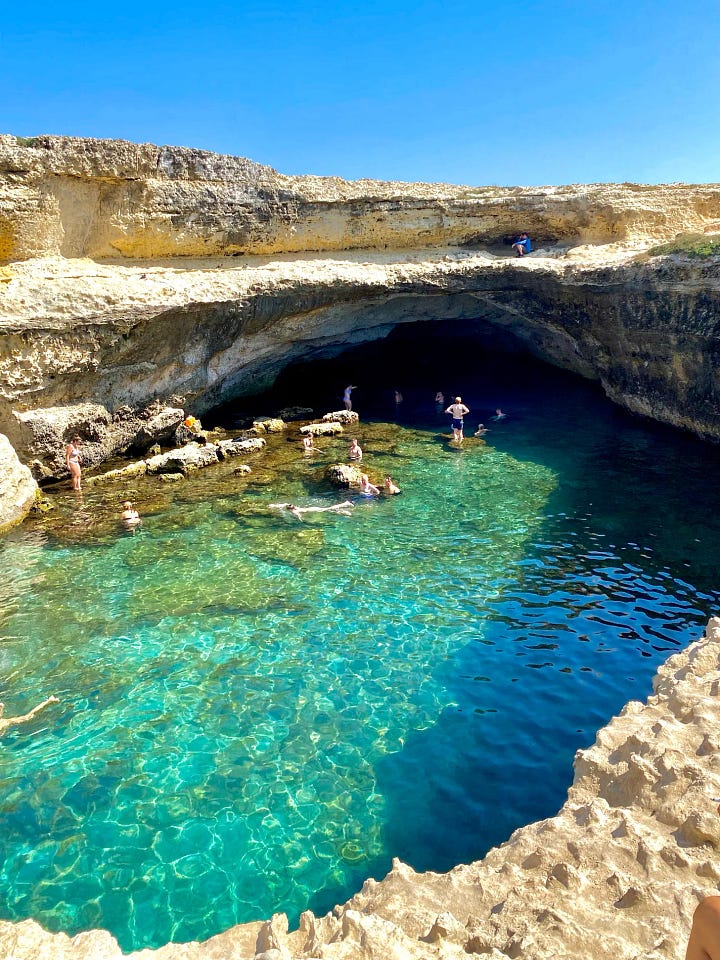
Lecce is one of the largest cities in Puglia and definitely felt much more developed than Otranto and company. My accommodations were forgettable, and as mentioned, didn’t really matter. I just needed a home base for my exploring. I went for a jog through the winding, historic streets and scoped out some shops to return to later. I stopped at a market and bought a friend a beautiful 4 euro, floral table cloth. I added to my ceramic haul at the sublime bomboniere AeD shop then capped off the night amongst the locals with dinner at A Cucina di Mamma Elvira. One day is enough in Lecce, despite being one of the larger cities. Puglia is about discovering the hidden, magical spots.
OSTUNI
In the morning, I drove to Ostuni, an awe-inspiring white city perched on a hilltop. In terms of sights, this was one of the most breathtaking to drive up to. It was easy to get lost in the bright, winding, seemingly never-ending colorless alleys with pops of green and flora. I got a café and found two more ceramic stores—somebody stop me! Must stops for ceramics are Carella Ostuni and also Antichità La Puglia for rustic-ware.
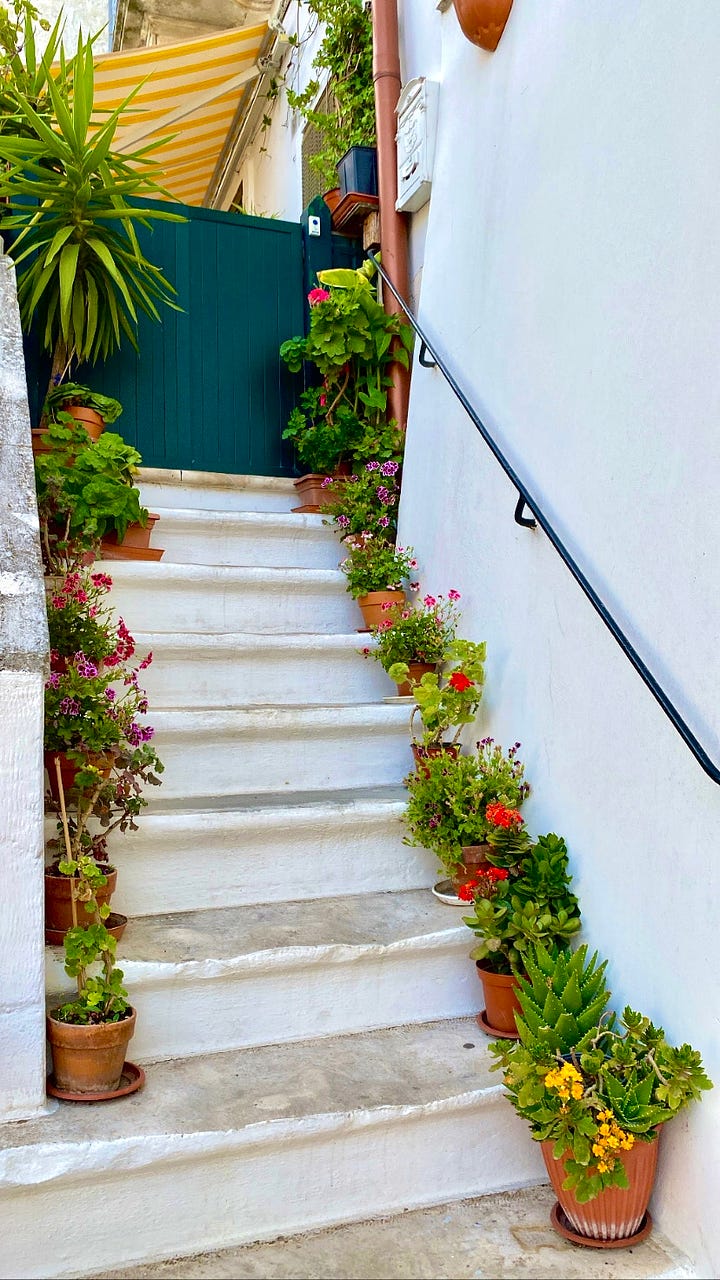
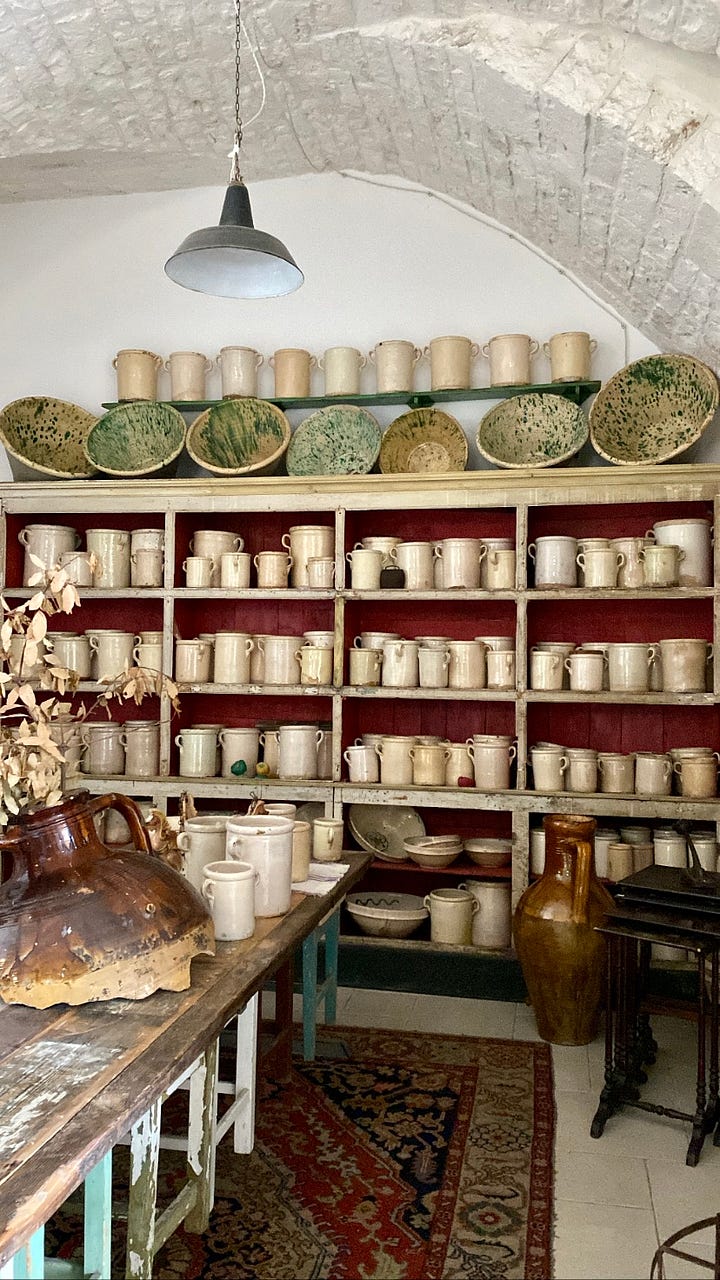
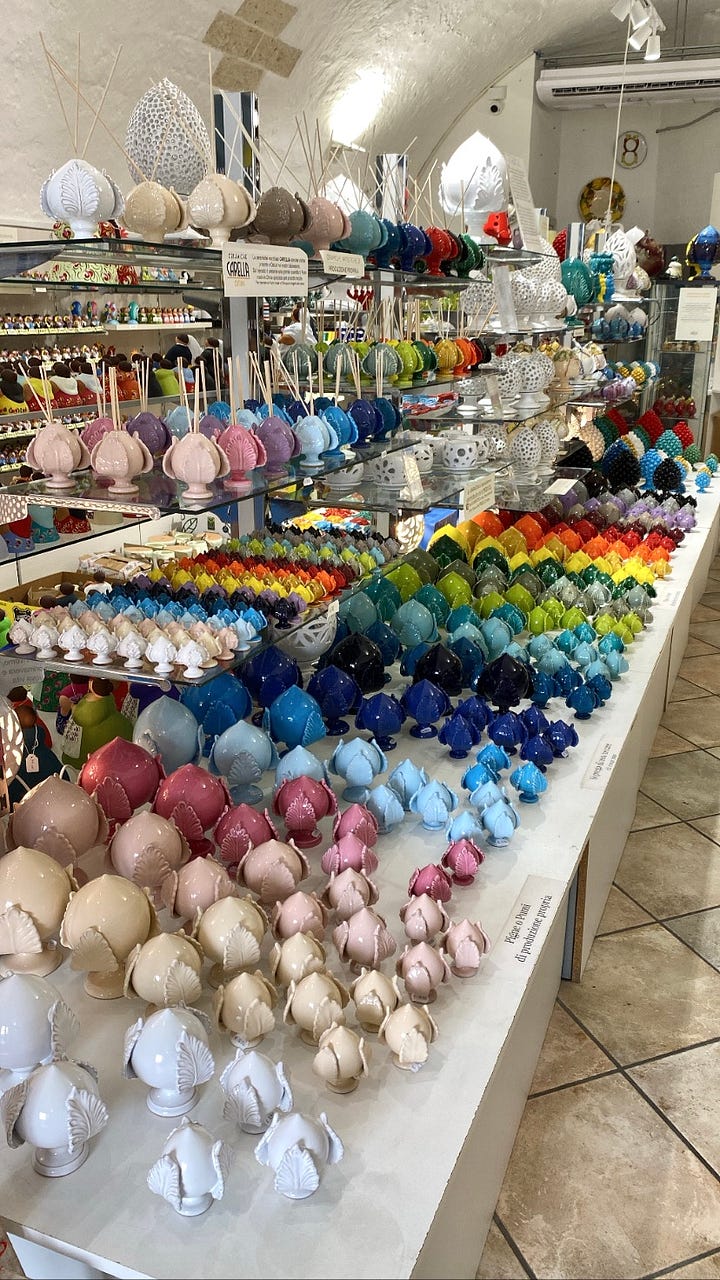
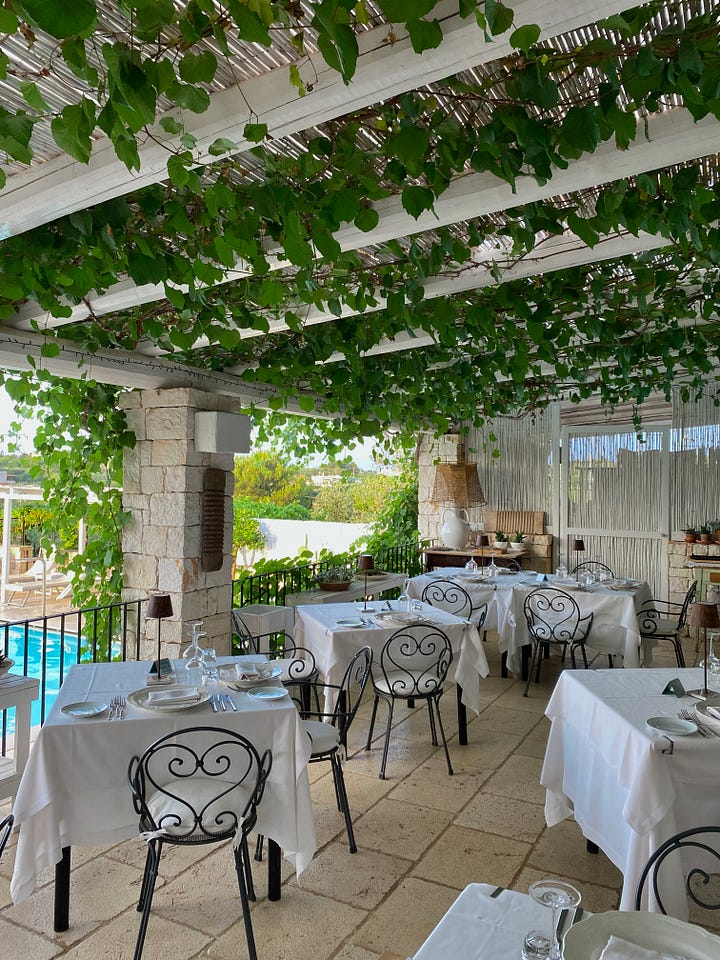
For all the foodies, I had an exquisite dinner at Masseria Salinola, a hotel and working farm. Before dinner, I walked among the tomato crops and chirping chickens as the sun set. Pretty wonderful. Then I indulged in the 4-course menu planned that day based on the fresh, seasonal produce available.
Didn’t do but wanted to:
Dine: Masseria Il Frantoio, call well in advance
MONOPOLI & POLIGNANO A MARE
The following day, I once again schlepped northward. Today’s pitstop was Alberobello, the UNESCO heritage site. Here, I saw the conical architecture Puglia is known for called trulli. The trulli were originally pit stops for farmers and cows traveling to deliver grains and other food to various parts of Italy. It was really a special place, but easy to do in 30 minutes. No need to linger after soaking in the architecture. They are known for their handwoven linens, and I bought an amazing oversized striped beach bag. I wish I could remember the name of the hole in the wall, but that is what is so amazing, you unearth hidden craftsmanship everywhere in Puglia.
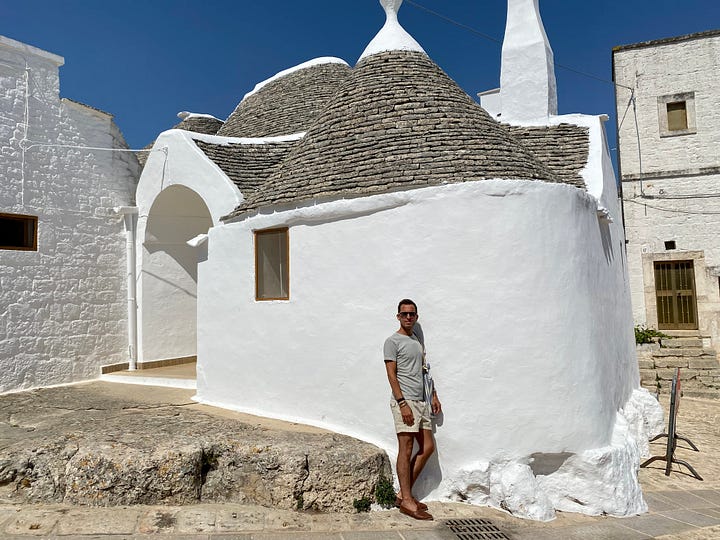
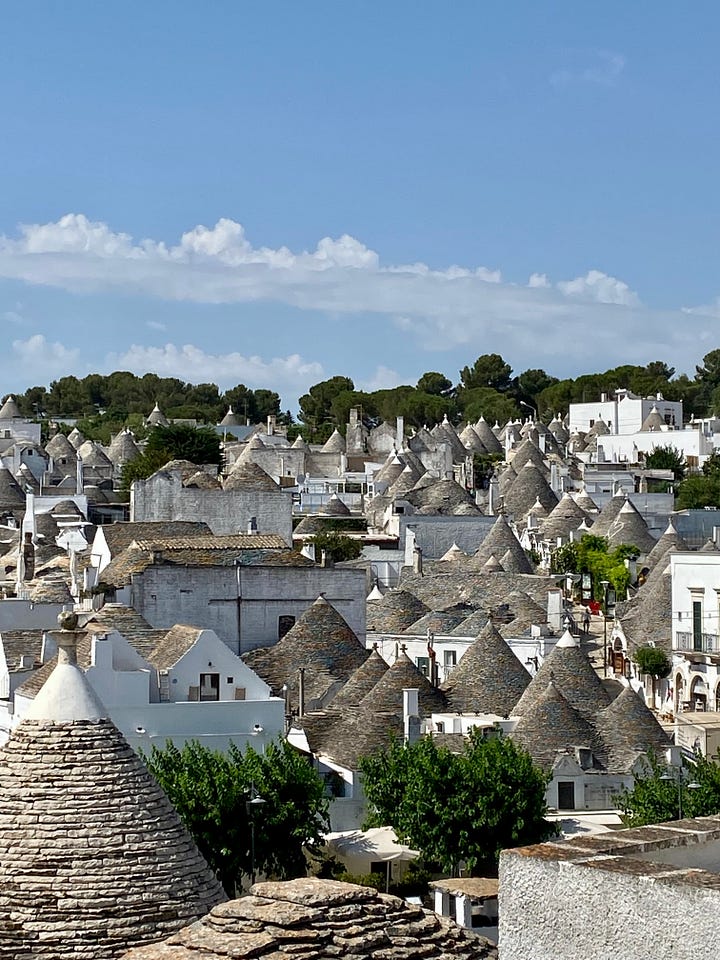
In Monopoli, I stayed at a cute quintessentially Puglian farm-style hotel called Masseria Santa Teresa. A simple affair, but jogging among the miles and miles of olive farms was a delight. After dropping off some things, my first stop was the infamous Lama Monachile beach. Think Gray Malin wet dream. A public beach, every grain of sand was covered with tanned locals and tourists. The view was something else, and this is a must-see.
Dinner was in Polignano a Mare at the unforgettable Grotta Pallazesse. The restaurant sits inside of a natural cave. Birds buzz ahead throughout dinner as the sun descends. The cave has hosted events since the 1700s (see photo below). Book FAR in advance, the tourists love it and rightfully so.
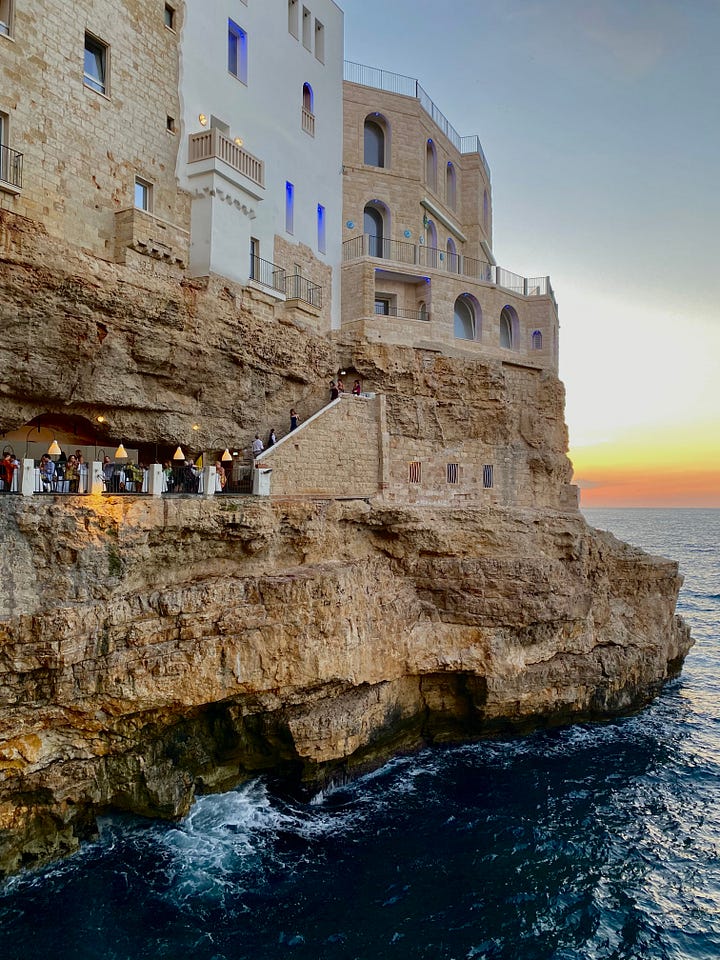
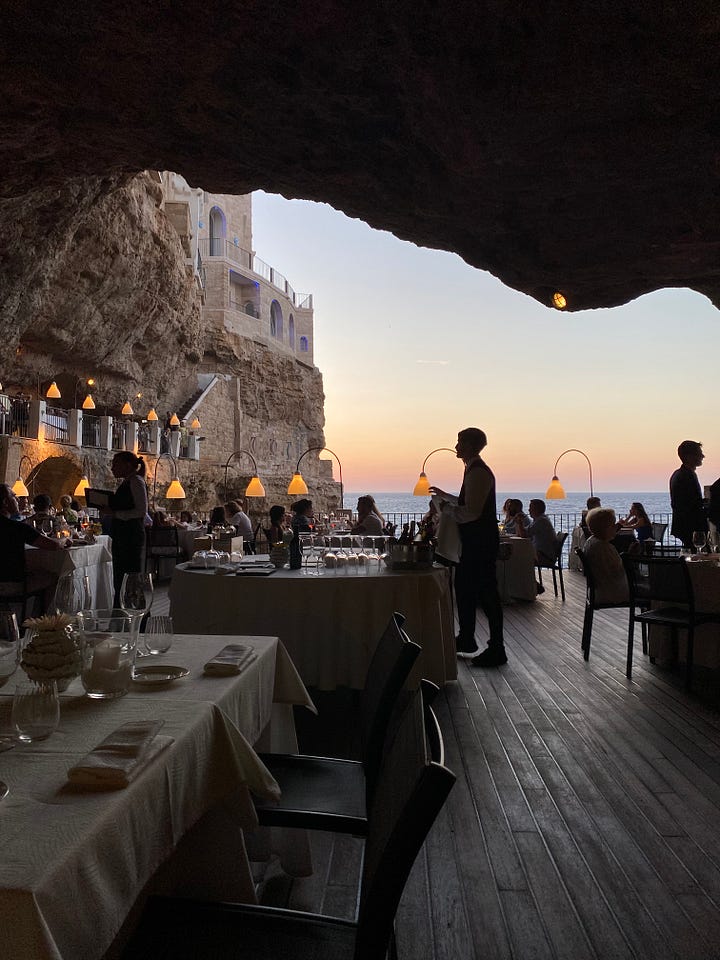
BARI
I ended my trip with a night in Bari, the largest city in Puglia that hosts the largest region’s airport. On the way to Bari, I stopped in Conversano, off the beaten path, for a private cooking lesson with the amazing Domenico of Puglia Kitchen. I learned how to make the staple Puglian pasta known worldwide as orecchiette and a delicious tomato focaccia. The trick is to drag the back of a knife across a mix of two types of flour to get the curled ear-shape. (Side note: Most pastas don’t have egg. Did you know that? Kind of blew my mind.)
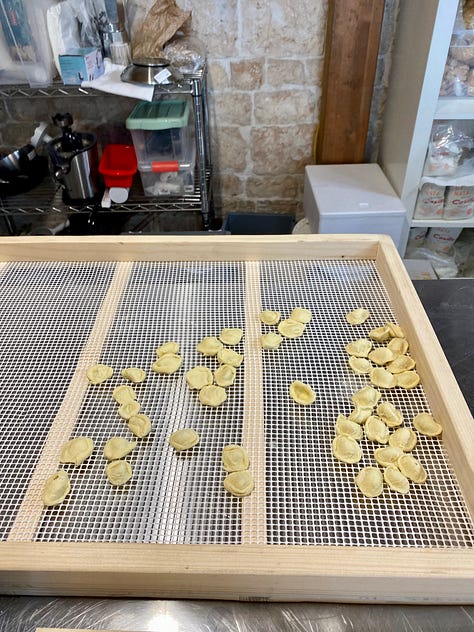

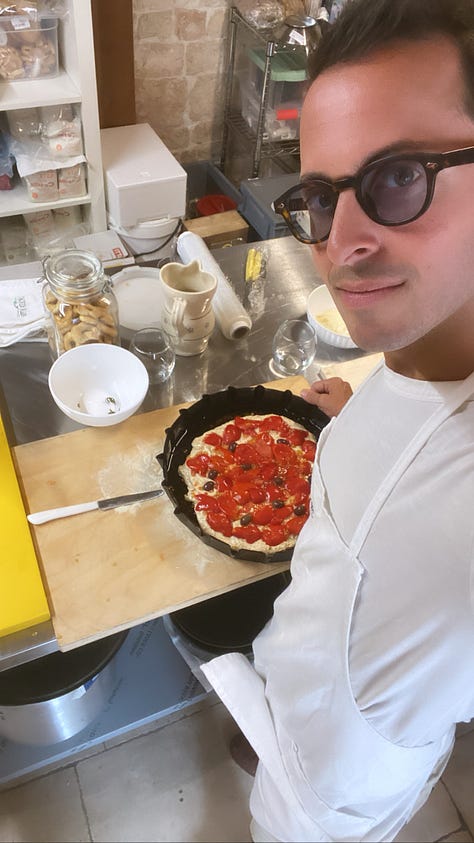
Upon arrival in Bari, I walked through Bari Vecchia, the old town, and wound through the streets. I was delighted to find rows of old women sitting street-side making fresh orecchiette in the serpentine alleyways. The shopping in this larger town is more commercially Italian, but very good. I discovered a new sneaker brand at Via Larga, the best men’s store in my opinion, and picked up an amazing dress shirt and striped, creped pants at Giampaolo.
Finally treated myself to some gelato (maybe went back for seconds) then basta—It was time to depart for France! Tough life.
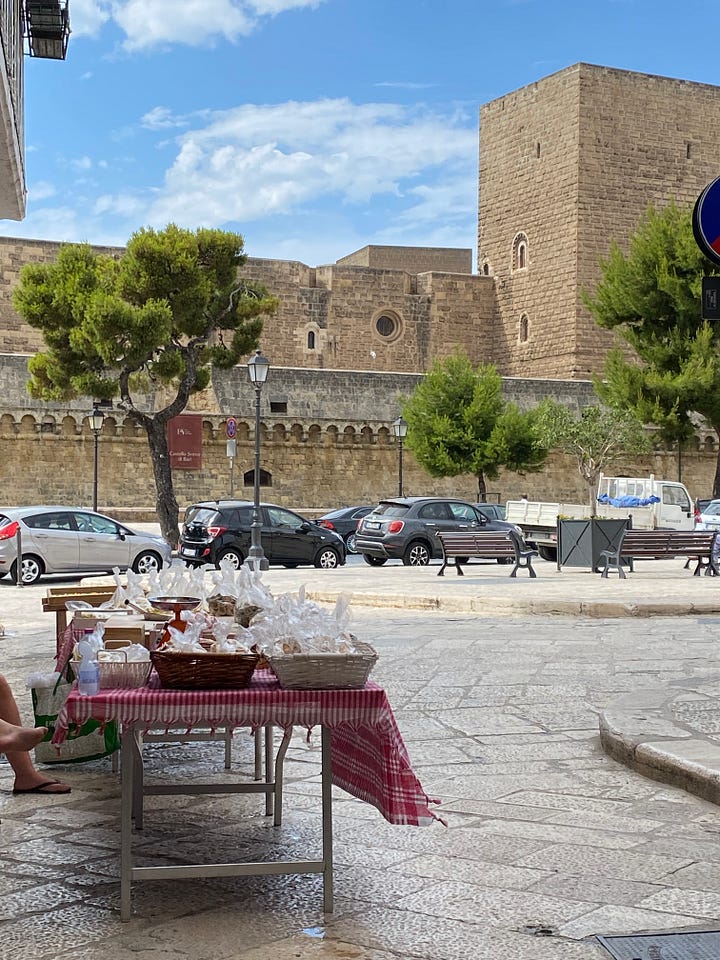
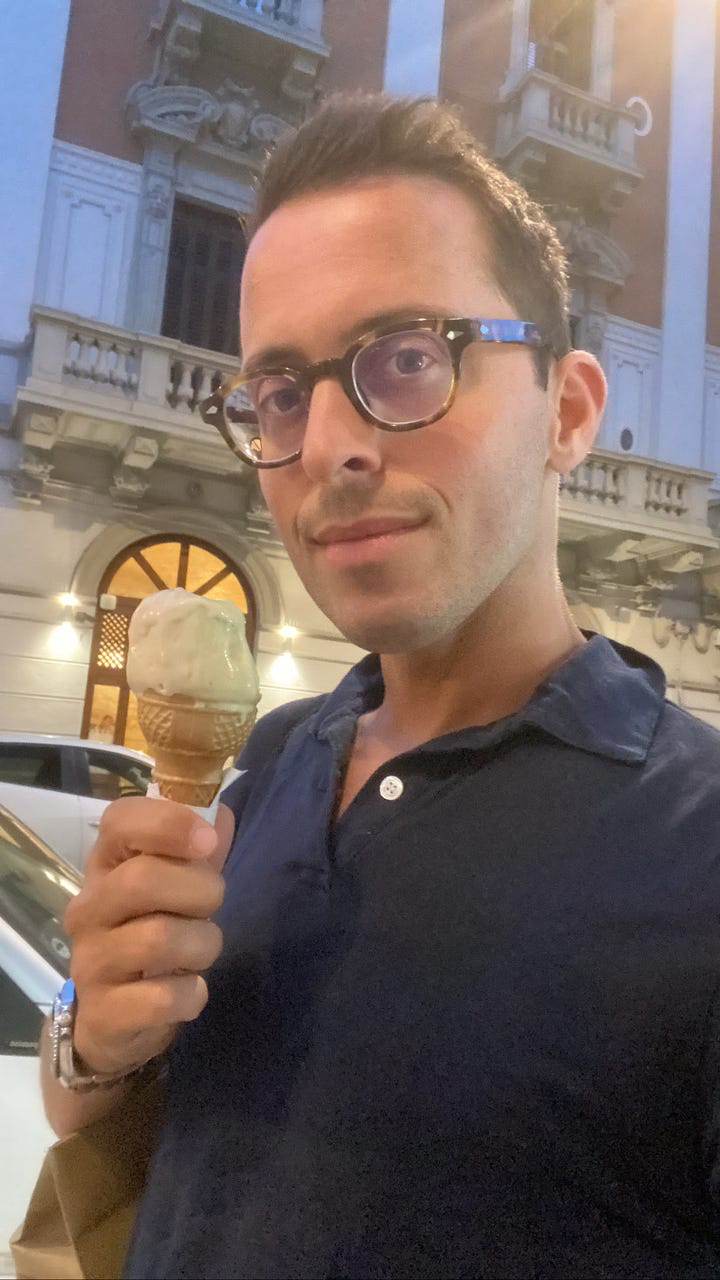
Puglia was a wild dream that feels like you’re stepping back in time and forgetting modern life. I couldn’t it recommend more. I cannot wait to return to this dry, strange place and discover more treasures, both experiential and ceramic! A presto.




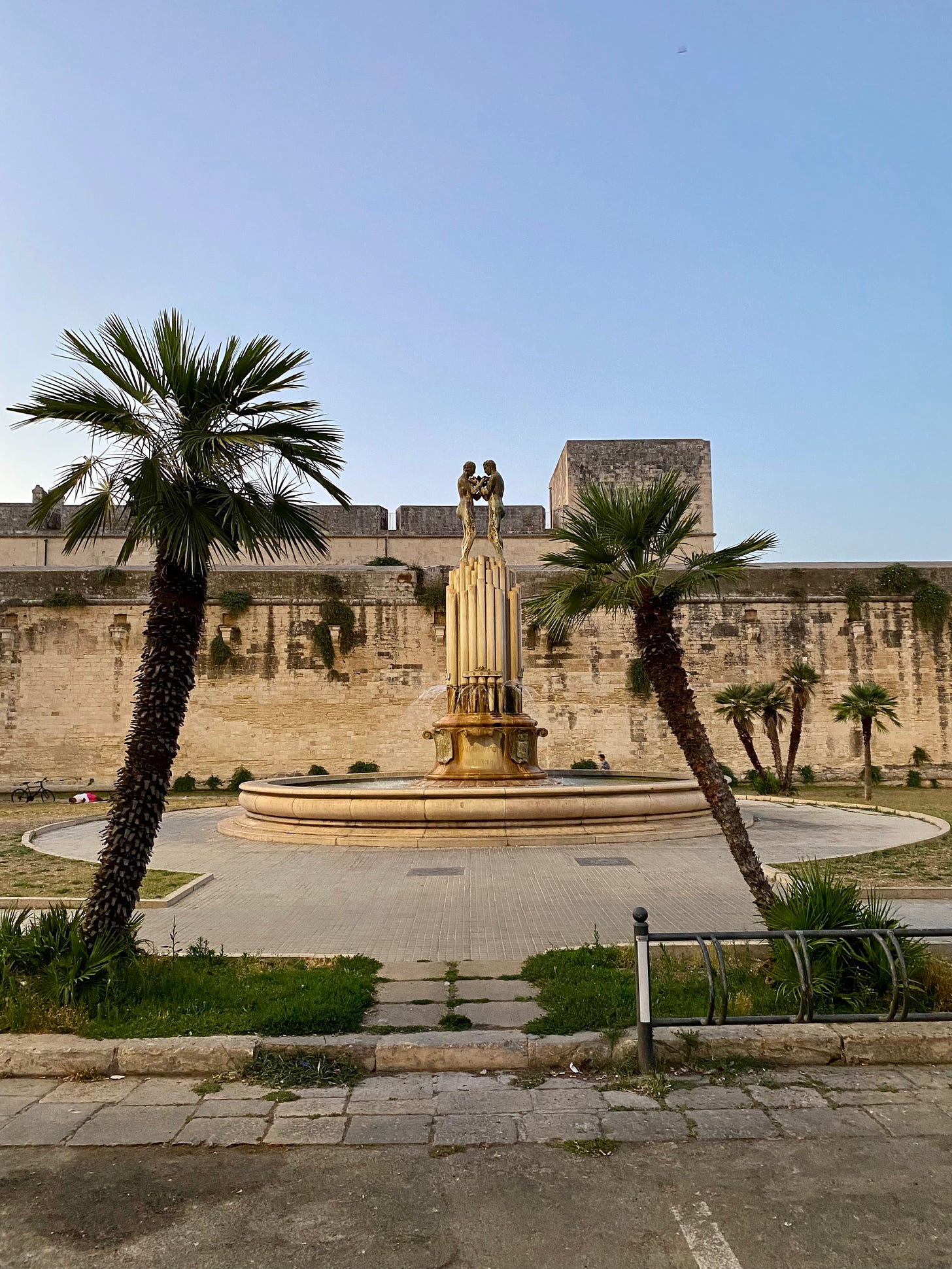
A delight to find in my inbox today - feel like I was there with you! Also: where’s MY 4 euro tablecloth?